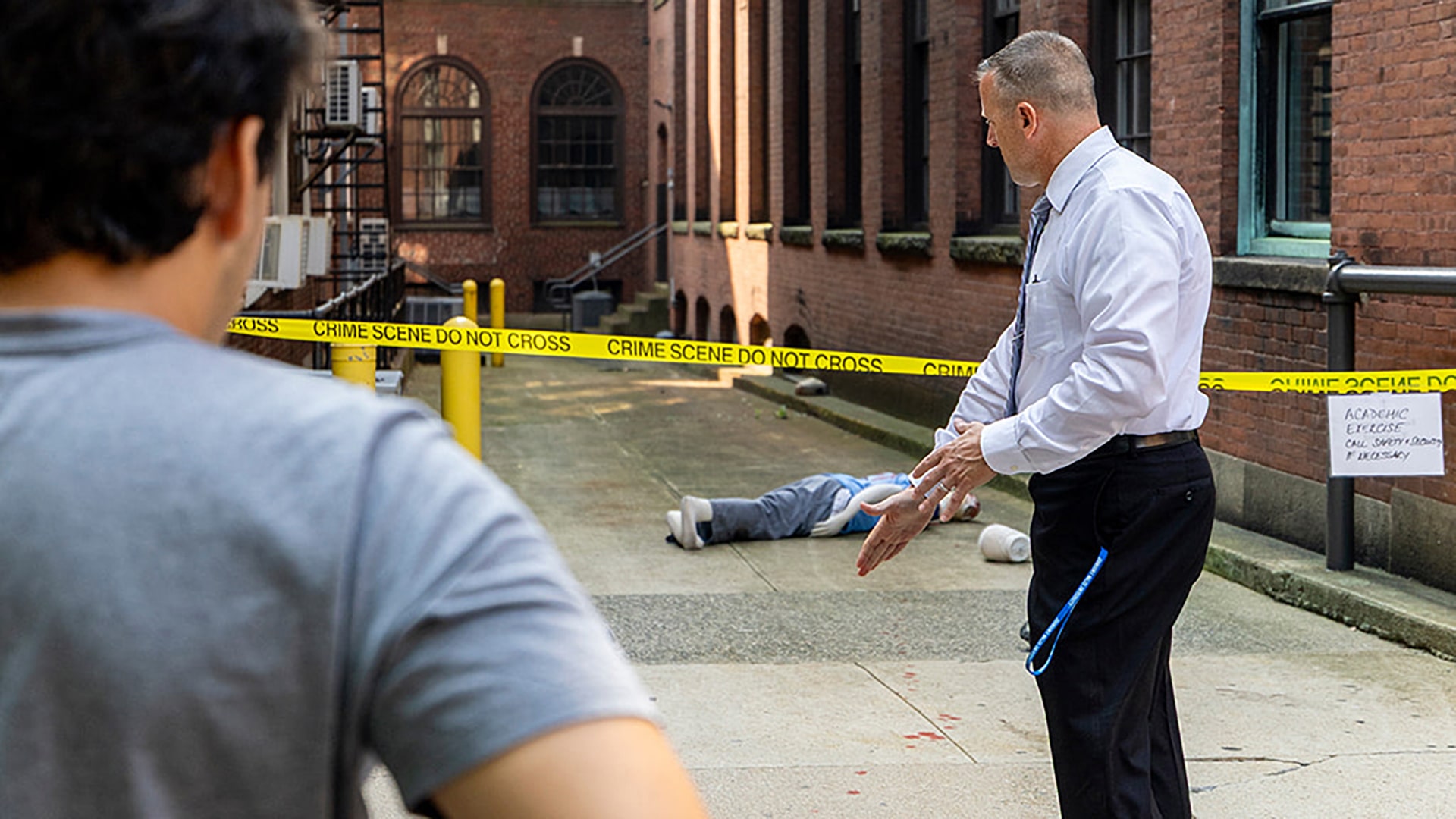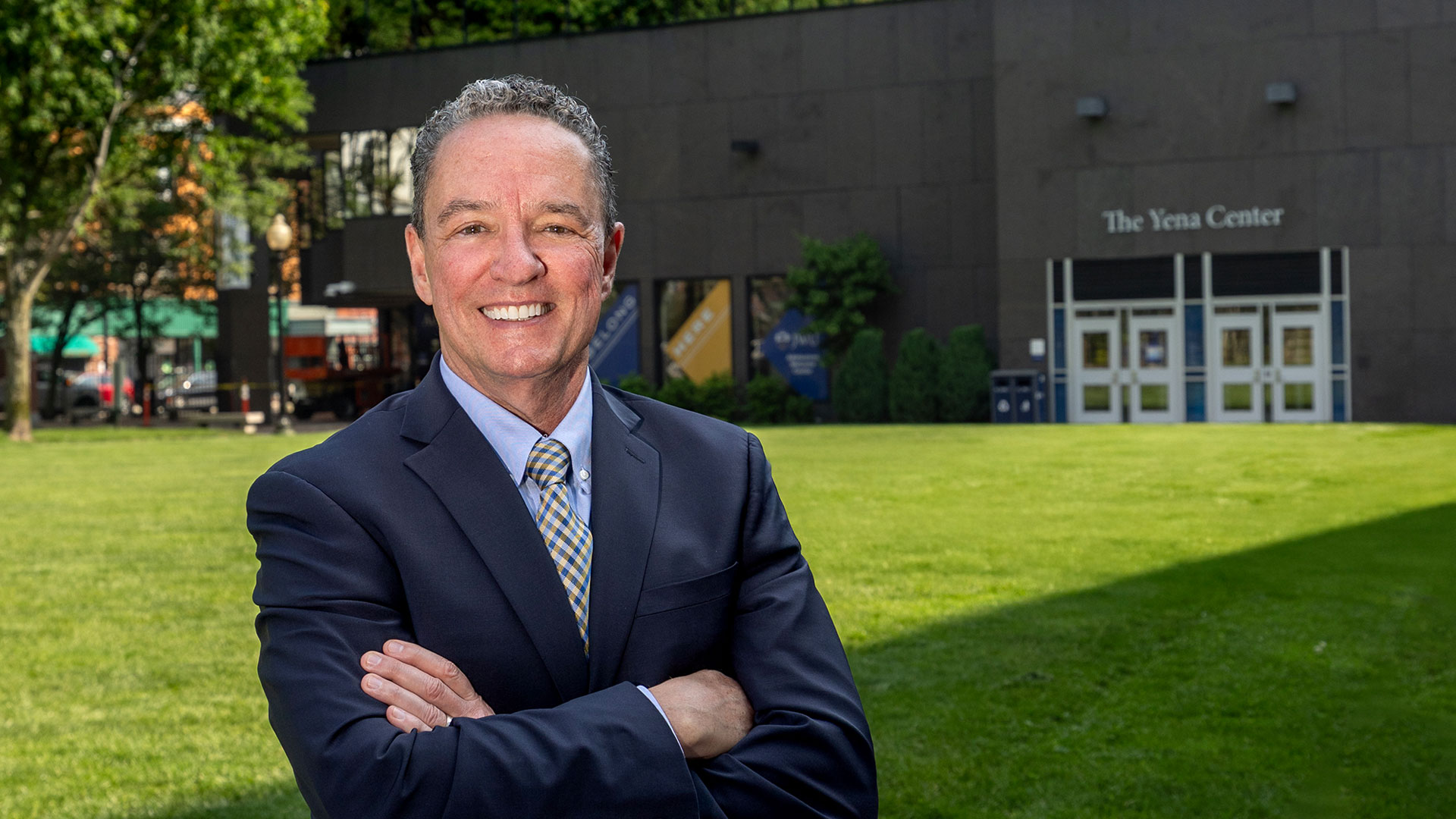The Speed of Sound: JWU’s Shift to Remote Learning
When Covid-19 unraveled traditional learning this spring, JWU professors, assisted by the Instructional Design & Technology (IDT) department and the College of Online Education (COE), nimbly ported on-the-ground courses into remote ones — with SWAT-team deft.
“We rolled out Blackboard’s entire integrated video conferencing platform (Blackboard Collaborate Ultra) to the whole community this spring in about a day and a half,” says Keri Green, JWU’s director of Instructional Design & Technology (IDT). For her Providence crew (Diane DeMelo, Casey Quinn and Jillian Gesualdi), and those at the branch campuses (Kelly Coban in Charlotte and Brandon Woods in North Miami), days can now stretch to 12-hour shifts as they strive to deliver optimal remote instruction using Blackboard Learn’s management system (referred to as ulearn in-house at JWU).
 “Our students are not necessarily used to the online learning modalities,” says Green. “They have to find quiet space away from family and barking dogs, and the internet connection may be slow because everyone is online right now.” Being self-directed is key: “Some students might wait until closer to the due date to get assignments done and not realize that in this new modality, something might take a lot longer than usual.”
“Our students are not necessarily used to the online learning modalities,” says Green. “They have to find quiet space away from family and barking dogs, and the internet connection may be slow because everyone is online right now.” Being self-directed is key: “Some students might wait until closer to the due date to get assignments done and not realize that in this new modality, something might take a lot longer than usual.”
Another diversion is the Covid cloud, where we test elasticized waistbands and abandon earnest to-do lists for Netflix. “The student anxiety is pretty palpable,” says Magnus Thorsson, an associate professor of Management at JWU Providence. “They are distracted by what’s happening in the world; some live with a loved one who is experiencing the illness and others are essential workers.” Yet he has watched students become more fluent in remote: “You see that JWU grit as they take on this challenge.”
In his four business courses (which contain asynchronous and synchronous real-time learning), Thorsson finds students who were uncomfortable speaking up in class “often shine in the online learning. They express themselves well in the written format and will ask thoughtful questions online — minority students who are less comfortable with English are speaking up more.”
“You see that JWU grit as they take on this challenge.”
Thorsson adds, “Students have also put more thought into assignments, expressing themselves in the written format a little more deeply. It’s almost like, ‘There’s nothing else to do around here so I may as well study!’”
If professors have concerns about (ahem) academic integrity, IDT recommends they rely on alternative assessments. For example, students can prepare video presentations or write papers instead of taking an exam. “In accounting courses they have a multiple-choice component exam plus another one where students create a net income statement,” says Green.
Of course, it takes a village to pivot from face-to-face courses to remote instruction in days. The College of Online Education made its master courses available to faculty teaching the same courses “on the ground” and compiled a student tips guide for the online modality.
While the terms “remote” and “online” education are sometimes blurred and some people reference this experiment as a metric of online course efficacy, COE Director Amy Ricci clarifies the two approaches are distinct. “We have a very intensive months-long course development process for online classes,” she explains. “Everything is very purposefully put together and created with the Instructional Design & Technology Department. Students in an online course will find there is likely a lot more context, clarity and navigation — it’s probably more seamless than what they find in a remote course, where the wheel had to be invented rapidly.” Online courses also cater to myriad learning styles, so content is presented in a visual, auditory and written format.
Some self-motivated, tech-savvy students love the switch to remote instruction. “They have a list of what needs to get done and can manage it on their own schedule,” says Green. “Some students are working extra hours at a job because they have parents who are out of work. If there is a recorded live lecture, they can view it afterwards. And those students who didn’t understand it the first time can listen to it again, which helps their comprehension.”
Remote instruction has opened a window of innovation. Physician Assistant students participate in telemedicine sessions to substitute for clinical rotations, and culinary students designed a menu geared for hospital patients.With many people under house arrest, professors have secured guest lecturers who might otherwise be too busy. Kevin DeJesus, an assistant professor of social sciences, hosted the UK-based researcher Pauline Hadaway, who lectured on “From Murals to Marriages: Sectarianism and the New Politics in Northern Ireland.”
Another positive? According to COE’s Ricci, there will be more faculty interested in teaching for the College of Online Education. And professors who leaned Luddite now realize the power of ulearn. The force will be them as they integrate into face-to-face courses. “We made more headway this term in getting faculty to use this technology than during the past 10 years,” says Green. “There’s no going back!”
RELATED READING
JWU Moves to Online + Remote Instruction Due to Coronavirus



